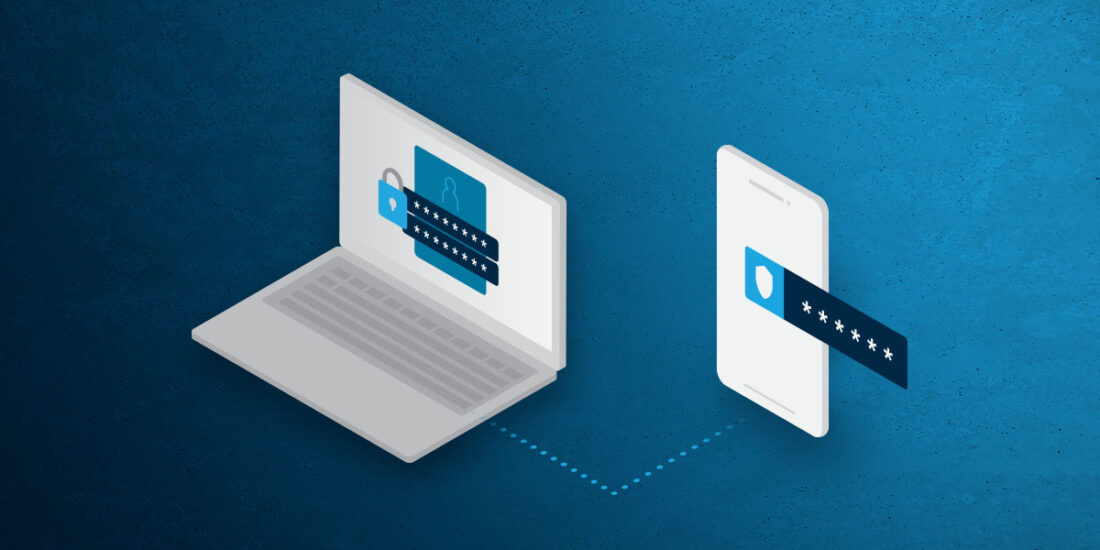Why to Embrace Multi-Factor Authentication (MFA)
- Written by: Jordan Engbers

Nearly every account online now requires a few extra layers of security. From receiving a code through text message for bank account access, to scanning your retina to log into an app, there are more and more efforts to protect your online accounts. While it may feel excessive to some, these extra steps are important layers of protection designed to help you called Multi-Factor Authentication (MFA).
Definition of Multi-Factor Authentication
Via National Institute of Standards and Technology (NIST):
MFA, sometimes referred to as two-factor authentication or 2FA, is a security enhancement that allows you to present two pieces of evidence – your credentials – when logging in to an account.
Your credentials fall into any of these three categories:
- Something you know (like a password or PIN)
- Something you have (like a smart card, phone or token)
- Something you are (like your fingerprint)
Your credentials must come from two different categories to enhance security – so entering two different passwords would not be considered multi-factor.
Protecting with MFA
MFA is a simple way to boost your business’s cybersecurity strength. While other security programs and software can potentially be bypassed by a threat actor, a solid MFA is more difficult to hack. Not only will the hacker need access to your name and password, they’ll also need information from one of the other categories such as access to your smartphone or your fingerprint.
This sort of protection is especially important when dealing with business networks. Having access to things like client data, employee information, and proprietary documents can be extremely valuable to a hacker. That’s why MFA is essential for protecting your business information. When planning the implementation of Mult-Factor Authentication, each organization should do a Risk Assessment to determine their levels and sources of threats. Once you know where and how someone could infiltrate your system, the better prepared you’ll be to enable security, like MFA, in the proper places. You’ll also be able to see which members of your team need higher levels of security. For example, members of the executive team may need to have a stricter security access process than someone working janitorial services. It’s all about being able to examine the needs of your organization and working from there.
On top of protecting your business information from being stolen, you’re also protecting it from being damaged. Not all threat actors want to steal data. Some malicious attacks are done with the intent of destruction. Using a simple, extra layer of security with MFA can help protect your data from both.
Familiarity with MFA
The great thing about MFA is that most people are already using it! That includes most banks, credit cards companies, Amazon account, college savings accounts, investment and retirement accounts. Your employees have probably been using MFA for a few years now with their personal emails and through other accounts.
Since several large corporations are now requiring MFA, that should make the transition for your company even more seamless. People should already feel comfortable using MFA, since it’s been part of daily life for people using online services. The less confusion when introducing a new security program, the better!
It’s also something clients will recognize when you’re trying to explain the security of your business to help ensure confidence in working with you. When you are able to tell a potential client you have MFA set up within your organization, additional trust will be established.
It’s (Typically) Easy
Just because it works, doesn’t mean it has to be complicated. While much of cybersecurity can appear confusing and overwhelm people, MFA is pretty straightforward. There are even some free applications, like Google Authenticator, to setup MFA on personal devices.
When choosing an MFA program for your business, there are several options designed for organizations of different sizes. To choose the best option for your operation, talk with a cybersecurity consultant to determine what will work best for your needs.
Extra Security is Necessary
While anti-virus and firewalls are important, they’re not always effective alone. MFA can make your existing security measures even stronger. It may take a few extra steps and a little more time, but the benefits of MFA can greatly outweigh the additional work.
First decide where MFA is necessary in your organization, then determine which program is the best fit for your company. Once you have it established, continue to monitor the effectiveness of the MFA program and your cybersecurity as a whole. For more information on how to analyze your security strength and choose an MFA program, contact HBS!






